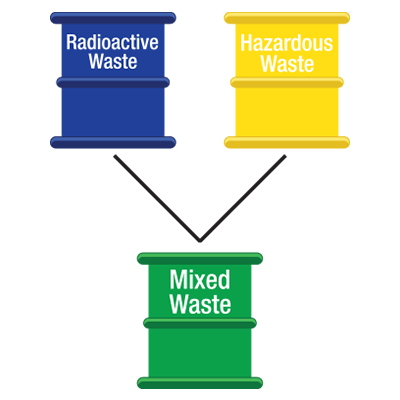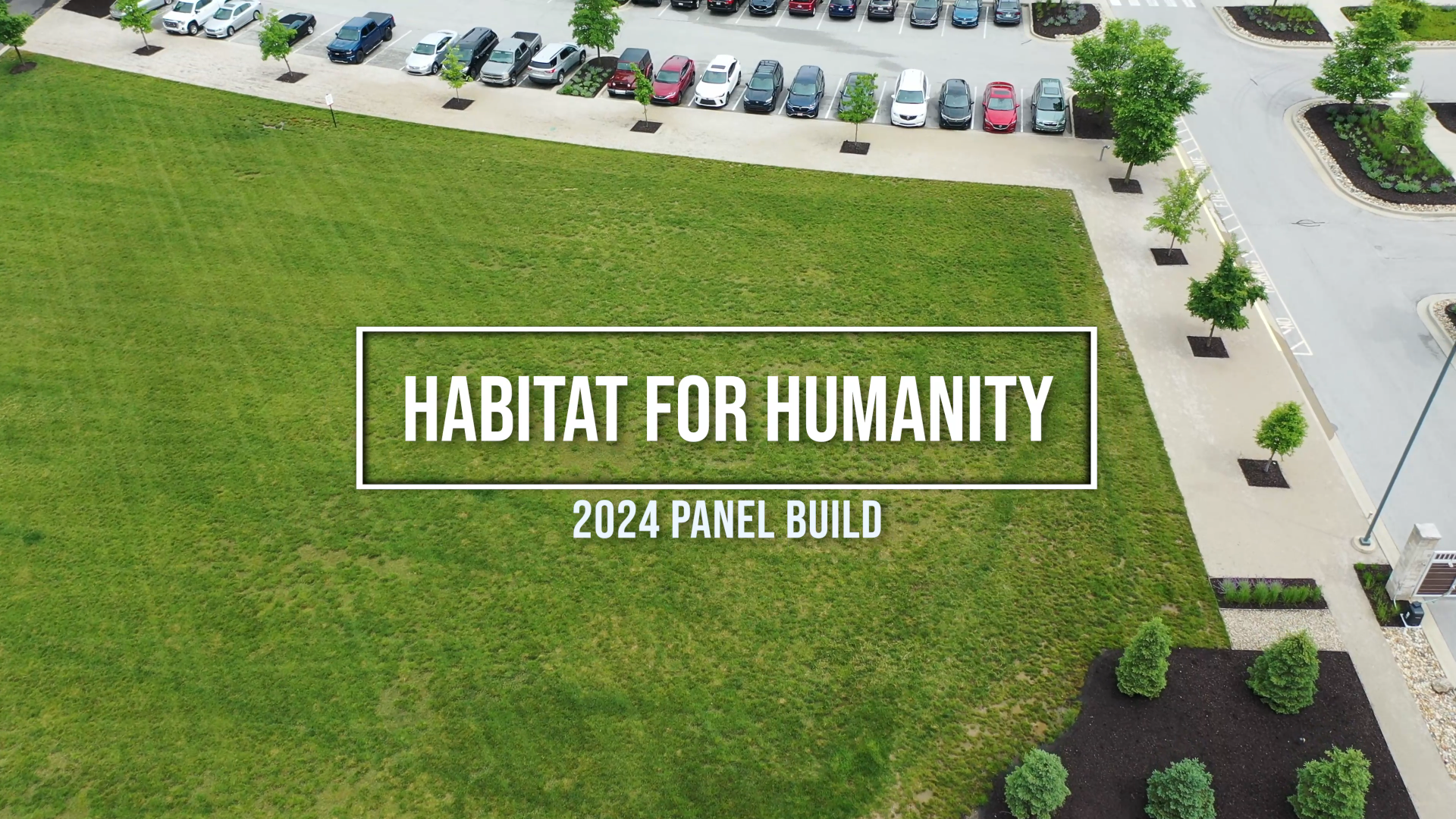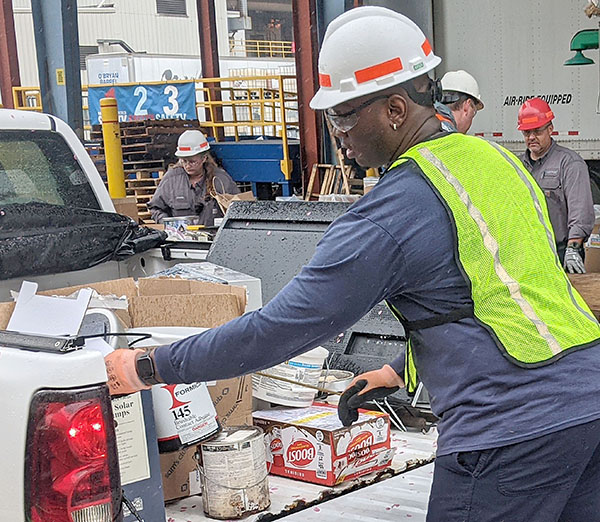
When a waste material contains radioactive as well as hazardous components it is considered a mixed waste. According to the EPA, “mixed-waste can be generated anywhere radioactive materials are used in processes that also involve the use of chemically hazardous materials.” Generally, however, they come from one of two sources. The first is low-level mixed-waste which is created by commercial users. The second is “low-level, high-level, and transuranic mixed-waste generated by the Department of Energy [source],” both are explained in detail below. Because mixed waste includes both radioactive and hazardous material the treatment and regulation are even more complex than when handling either type of waste individually.
According to the EPA, “most commercially-generated (i.e., non-DOE) mixed waste is classified as low-level mixed waste (LLMW). LLMW is waste that contains low-level radioactive waste (LLRW) and hazardous waste. LLRW is defined as any radioactive waste that is not high-level radioactive waste, spent nuclear fuel, or byproduct material. LLMW is generated commercially in all 50 states at industrial, hospital, and nuclear power plant facilities in a number of processes such as medical diagnostic testing and research, pharmaceutical and biotechnology development, pesticide research, and nuclear power plant operations.”
As mentioned above, the United States Department of Energy produces three different types of mixed waste. The EPA details the three categories as:
- “Low-level mixed waste (LLMW) – [this waste type] results from research, development, and production of nuclear weapons. An estimated 226,000 cubic meters (m3) of DOE LLMW will require management over the next 20 years.
- High-level mixed waste (HLW) – [this waste type] results from reprocessing spent nuclear fuel and irradiated targets from reactors. These wastes often contain highly-corrosive components, organics, or heavy metals that are regulated under RCRA. DOE has about 399,000 m3 of HLW stored in large tanks at four locations across the U.S.
- Mixed transuranic waste (MTRU) – [this waste type] contains radioactive elements heavier than uranium and a hazardous waste component. MTRU is primarily generated from nuclear weapons fabrication, plutonium bearing reactor fuel fabrication, and spent fuel reprocessing.”
Mixed waste is regulated by both the Resource Conservation and Recovery Act (RCRA) and the Atomic Energy Act (AEA). Generally the regulatory bodies agree on requirements but if they do not AEA takes precedence. That said, the Department of Energy is self-regulating with orders applying to both DOE sites and contractors. These sites must comply with the Federal Facilities Compliance Act (FFCA) which was made into law in 1992.
In 2001, the EPA finalized the mixed waste rule. This rule, “provides increased flexibility to generators and facilities that manage low-level mixed waste (LLMW) and technologically-enhanced, naturally-occurring, and/or accelerator-produced radioactive material (NARM) containing hazardous waste.” It also addresses the differences in storage, treatment, and transportation rules between hazardous wastes and mixed wastes.
If you would like further information about mixed waste visit the EPA article on the subject, Mixed Wastes.
More News From Heritage
-
6/27/24
Heritage Environmental Services to Acquire EBV from General Dynamics
Heritage Environmental Servicess, an EQT Infrastructure portfolio company, will acquire EBV from General Dynamics
-
6/13/24
Meet The Facilities – East Liverpool
An inside look at our incineration facility located in East Liverpool, OH
-
5/24/24
Habitat for Humanity 2024
Heritage hosted our 14th annual Habitat for Humanity build this month, partnering with over 50 employees from various THG companies.
-
5/6/24
Date set for the household hazardous waste collection in East Liverpool, Ohio
-
3/12/24
Equal Pay Day – Spotlighting Our Female Drivers
-
3/8/24
International Women’s Week Spotlight – Shannon Dippel
For International Women's Week, we're spotlighting some of the incredible women in the Heritage family. Our final spotlight is Shannon Dippel.
-
3/8/24
International Women’s Week Spotlight – Susan Adams
For International Women's Week, we're spotlighting some of the incredible women in the Heritage family. Our sixth spotlight is Susan Adams.
-
3/7/24
International Women’s Week Spotlight – Lea Wilson
For International Women's Week, we're spotlighting some of the incredible women in the Heritage family. Our fifth spotlight is Lea Wilson








